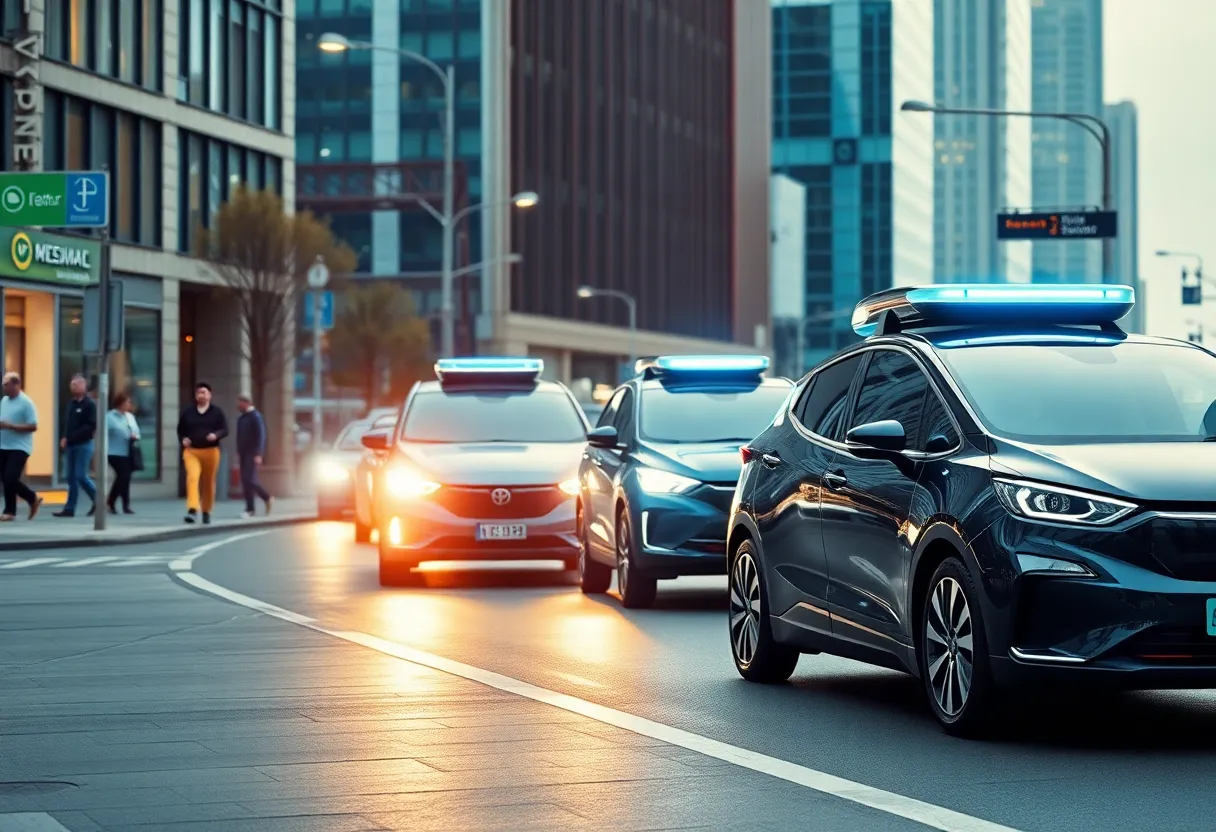News Summary
Tesla is adopting a conservative approach to its ridesharing service as it engages with California regulators. Internal documents reveal multiple meetings since the start of 2024, with a focus on securing existing permits rather than launching a widespread Robotaxi service. Key discussions highlight the need for regulatory compliance, signaling a divergence from CEO Elon Musk’s ambitious plans. The company is currently limited to employee rides, with further expansion contingent on obtaining necessary permits. As Tesla navigates this complex regulatory landscape, the timeline for a fully operational Robotaxi service remains uncertain.
California – Tesla is currently engaged in a cautious expansion of its ridesharing service discussions with state regulators, diverging significantly from CEO Elon Musk’s previously announced ambitious plans for a comprehensive Robotaxi service. Internal documents indicate that Tesla representatives have conducted at least five meetings with the California Department of Motor Vehicles (DMV) since the onset of 2024, underscoring a conservative approach focused on securing existing permits rather than launching a broad Robotaxi initiative.
Key figures at these meetings included Miguel Acosta, the DMV’s chief of autonomous vehicles, highlighting the regulatory engagement required before any significant operational changes can occur. Despite Elon Musk’s aggressive timelines indicating a launch in the Bay Area could happen within months, there remains a substantial barrier: Tesla does not currently hold the necessary permits to operate any form of autonomous ridesharing service in California, even with a safety driver in place.
Two of the recent meetings with the DMV are slated for July, with the latest occurring shortly before the DMV issued a warning to Tesla regarding an unauthorized rollout in the Bay Area. Musk has made various promising statements about the readiness of the Robotaxi service, yet official communications between Tesla and the DMV have notably avoided mentioning the term “Robotaxi” over the past year. On April 10, Tesla’s senior counsel reached out to the DMV, clarifying that the company’s upcoming plans would not include unsupervised full self-driving operations in California, acknowledging the necessity for further permits.
Currently, Tesla has only been granted permission to operate a conventional ridesharing service, which is strictly limited to employee transportation. The company’s phased approach aims to first enable rides for employees, then for friends and family, before potentially introducing the service to the general public. This strategy reflects Tesla’s sensitivity to regulatory pressures and the need to clarify previous miscommunications, largely influenced by comments made by unnamed employees, which may have generated mixed signals regarding their operational intentions.
Musk’s public statements often coincide with official meetings with the DMV, suggesting a calculated approach to create media hype around Tesla’s developments. After social media speculation about unsupervised full self-driving, the company rapidly sought to reassure regulators that it would adhere to existing permits and regulations. The DMV has explicitly warned Tesla against utilizing current permits for transporting the public, regardless of whether a driver is present or whether payment is involved.
Recent communications from Tesla hinted at plans to expand its current transportation service, but stressed a commitment to comply with California’s regulatory framework. This cautious approach comes amid increasing scrutiny from local lawmakers, including Assemblymember Catherine Stefani, who have voiced concerns about ensuring Tesla’s adherence to regulations and the risks associated with a hasty deployment of new technology.
As Tesla continues its dialogues with the DMV, the focus has primarily been on the existing safety driver permits and the parameters for testing, indicating a complex landscape for the company moving forward if it aims to realize the Robotaxi service as envisioned. The evolving regulatory environment adds another layer of challenge, as California regulators have historically intervened on Tesla’s technology claims, emphasizing the necessity for ongoing compliance and scrutiny of the company’s operations.
In conclusion, while Elon Musk has repeatedly set ambitious timelines for Tesla’s Robotaxi service, the reality showcases a more measured and cautious strategy, heavily reliant on regulatory approvals and clear compliance with state laws. Without the appropriate permits and with ongoing regulatory oversight, the path to a fully operational Robotaxi fleet in California remains uncertain.
Deeper Dive: News & Info About This Topic
- Politico: Tesla Robotaxi Permit Problems
- Wikipedia: Tesla, Inc.
- Teslarati: Tesla Robotaxi Expansion
- Google Search: Tesla Robotaxi
- Business Insider: Tesla Robotaxi Launch
- Google Scholar: Tesla Robotaxi
- CNBC: Tesla’s Friends and Family Service
- Encyclopedia Britannica: Robotaxi
- ABC7 News: Tesla Robotaxi Service
- Google News: Tesla Robotaxi California

Author: STAFF HERE MISSION VIEJO WRITER
The MISSION VIEJO STAFF WRITER represents the experienced team at HEREMissionViejo.com, your go-to source for actionable local news and information in Mission Viejo, Orange County, and beyond. Specializing in "news you can use," we cover essential topics like product reviews for personal and business needs, local business directories, politics, real estate trends, neighborhood insights, and state news affecting the area—with deep expertise drawn from years of dedicated reporting and strong community input, including local press releases and business updates. We deliver top reporting on high-value events such as Oso Fit 5K Fun Run and Community Health Fair, Walk Against Drugs & Community Fair, and National Night Out. Our coverage extends to key organizations like the Mission Viejo Chamber of Commerce and Providence Mission Hospital Mission Viejo, plus leading businesses in retail and education that power the local economy such as The Shops at Mission Viejo, Capistrano Unified School District, and Amazon Delivery Station. As part of the broader HERE network, including HEREAnaheim.com, HEREBeverlyHills.com, HERECostaMesa.com, HERECoronado.com, HEREHollywood.com, HEREHuntingtonBeach.com, HERELongBeach.com, HERELosAngeles.com, HERESanDiego.com, and HERESantaAna.com, we provide comprehensive, credible insights into California's dynamic landscape.


